Liberation
"Don't Fence Me In": POW to RAMP
In 1944, as the war began to shift in favor of the Allies, conditions in POW camps worsened. Overcrowding and disease increased, as did the dangers of Allied bombing. Rumors swirled among prisoners about liberation, but also about doubts that the Germans would allow them to be liberated. Life became even more uncertain for the thousands of POWs held across Europe as Germany began to shift men, including POWs, into the inner core of their territory. Between January and April 1945, 80,000 Allied POWs were marched westward ahead of the Soviet Army in harsh winter weather. Referred to as the “Long March, ” “Long Trek” or “Black March,” it is thought that as many as 3,500 US and Commonwealth POWs died as a result. By 20 May 1945, all surviving American POWs were back in US hands. It would take many more months before the RAMPS (Recovered Allied Military Personnel) would be home, trying to end one chapter in their lives and begin another.
“Re-Captured”: Harry Nixon

Pvt. Harry Nixon served with the 103rd Infantry Division, 409th Infantry Regiment and was captured on 2 December 1944. Nixon was stripped of his US uniform and combat gear and was issued a WWI-style French Army uniform, which he wore as a POW in Stalag XIIA, IVB and then as part of a work detail near Glauchau, Germany, where he was liberated by the US Third Army on 15 April 1945. Nixon and his fellow prisoners were then safe to clown and pose with newly claimed souvenirs. It would be another month before most of them would be with their families again, but they knew the relief of liberation and the promise of freedom. Nixon wrote his family, “I am a free man again!!! I have been re-captured by the US 3rd Army and am back in GI hands again alive, well and happy.” It was common for American POWs to refer to their liberation by American troops as “re-capture.”
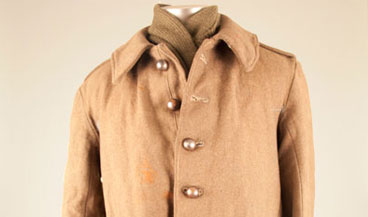
WWI-style French Army uniform worn by Harry Nixon while a POW.
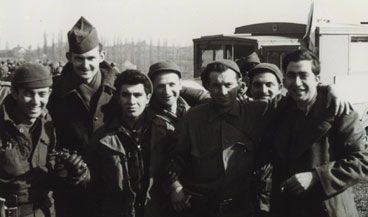
Harry Nixon (second from left) and fellow prisoners on 15 April 1945, the day of their liberation.

Postcard from Nixon to his parents.
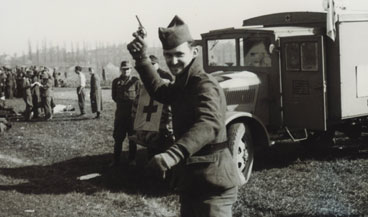
A newly liberated Harry Nixon on 15 April 1945.

Article from the San Antonio Light, May 1945.
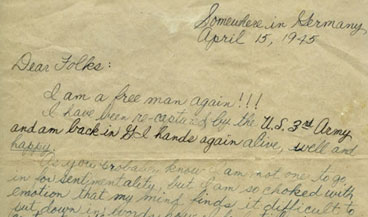
Letter from Nixon to his parents immediately after liberation.
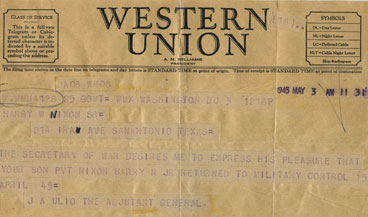
Telegram to Nixon’s family. 3 May 1945.
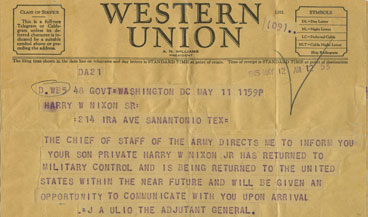
Telegram to Nixon’s family. 12 May 1945.
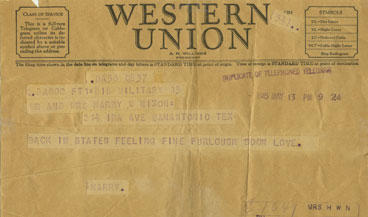
Telegram from Nixon to his family. 13 May 1945.